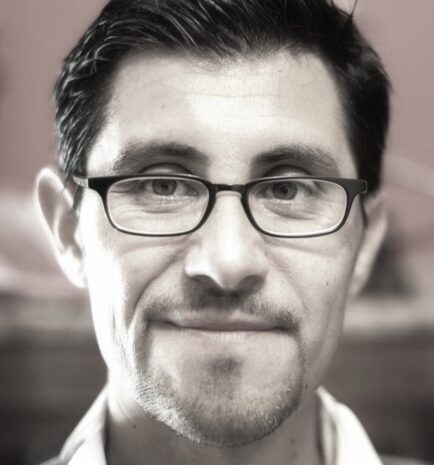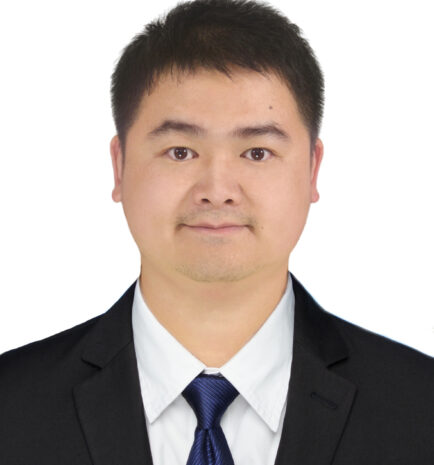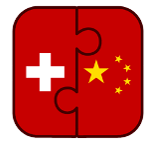
Medicine has come a long way. Prior to the 19th century, all illnesses in the West were ascribed to an imbalance in bodily fluids, the so called humors, which were assumed to determine people’s health and even character. This theory, introduced by Hippocrates who is credited with coining the “Hippocratic Oath”, lasted for centuries and only gradually got replaced by the germ theory of disease: the modern notion that diseases are caused – not by fluids being out of whack – but by invisible organisms or “germs”. Vastly more effective treatments were the result of this shift in thinking.
Even though in the 21th century we have a clearer picture of how the body works, the boundaries of medicine are still being pushed. In the 3rd edition of our Connected Series we will have a look at Sino-Swiss collaborations in this field. Our first speaker, Prof. Dr. Mauricio Reyes, will talk about new solutions for medical image analysis, which started out with the invention of the x-ray (1895) by Wilhelm Rontgen and took off with the introduction of magnetic resonance imaging (MRI) in the 1970’s, cutting back on the need for dangerous exploratory surgery.
Prof. Dr. Reyes, who is currently leading the data science team at the Insel Data Science Center of the University Hospital Inselspital in Bern, will talk about innovative AI-empowered ways of leveraging MRI imaging. A joint effort between the University of Bern and Malong Technologies (a Chinese artificial intelligence company developing state-of-the-art computer vision) has lead to significant improvements in the analysis of brain images. Prof. Dr. Reyes will explain how this new AI technology can assist in analyzing strokes and brain tumors.
Moving on from potentially life-saving pattern recognition, Prof. Dr. Tianwu Xie will talk about new ways of simulating the impact of radiation on the human body. Prof. Dr. Xie is a researcher at the Institute of Radiation Medicine at Fudan University and conducts his research in collaboration with the Geneva University Hospital. Traditionally, the impacts of radiation have been studied by using nonhuman primates who (sharing much of their evolutionary history with modern humans) resemble us in their organ structure, genome, life span and metabolism. Prof. Dr. Xie will propose an alternative for animal testing, which has been practiced for millennia starting with experiments by Aristotle and Erasistratus (who is considered by many to be the founding father of neuroscience). Prof. Dr. Xie will present computational models which imitate the inner-workings of nonhuman primates and aim to yield more accurate results.
Event Rundown
16:00-16:10 Introduction
16:10-16:30 A.I in Medical Imaging, and Swiss-China Joint Effort
(Prof. Dr. Mauricio Reyes – associate professor at the Artorg Center for Biomedical Engineering Research, University of Bern)
16:30-16:50 Development of computational model of non-human primates for radiation dosimetry
(Prof. Dr. Tianwu Xie – Researcher at the Institute of Radiation Medicine, Fudan University)
16:50-17:00 Q&A
Speakers
-
![]()
Bio
Prof. Dr. Mauricio Reyes
Associate professor at the Artorg Center for Biomedical Engineering Research, University of BernProf. Dr. Mauricio Reyes conducted graduate studies as Electrical Engineering at the University of Santiago, Chile where he was awarded best electrical engineer thesis by the Chilean Institute of Engineers School. He is an associate professor at the Artorg Center for Biomedical Engineering Research of the medical faculty of the University of Bern, and is currently leading the Data Science team at the Insel Data Science Center of the University Hospital Inselspital. His research focuses on basic and applied machine learning technologies as well as biomedical engineering solutions to improve healthcare through medical image computation technologies.
-
![]()
Bio
Prof. Dr. Tianwu Xie
Researcher at the Institute of Radiation Medicine, Fudan UniversityTianwu Xie is a tenure-track Professor in Fudan University. His researches focuses on radiation dosimetry in medical physics and the development of computational models for animal and human beings. Tianwu received his PhD from the Huazhong University of Science and Technology and then held a post-doctoral fellowship at the University of Geneva. Prior to coming to Fudan University, Tianwu was maître-assistant in the Faculty of Medicine at University of Geneva, Switzerland.
In collaboration with
Connected Series
The Connected Series is a new format at Swissnex in China putting a spotlight on the best Sino-Swiss collaboration projects and research efforts. It highlights how teams from both countries can best work together to create synergies and get their projects off the ground.



